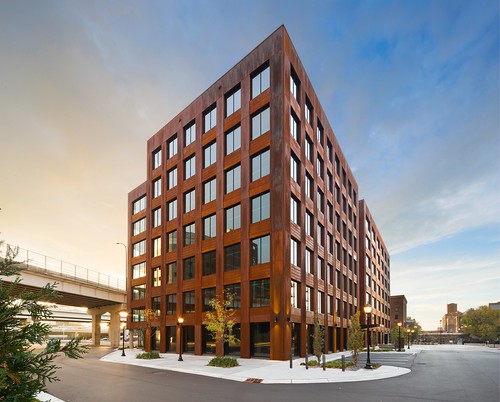
Some people are just way ahead of their time. In the mid-20th century, when most people thought of wood as an archaic and low-tech material, Egon Glesinger foresaw the revolutionary role it would play in our future, described in his book The Coming Age of Wood.
Scientists in the Northern Research Station’s new Strategic Foresight Group developed a horizon scanning system to identify emerging issues and trends that could be game-changers. A theme that has emerged is the wave of amazing innovations in wood products that could prove Mr. Glesinger right.
For example, wood-based nanomaterials have been produced at the Forest Products Lab (FPL) for more than five years. This renewable, biodegradable material can be used to make computer chips, flexible computer displays, car panels, replacement tendons - for humans - and coatings that keep food fresh longer.
Tall wood buildings, or plyscrapers, are sprouting up across the globe today, built with cross-laminated timber (CLT) and based on research from the FPL and elsewhere. CLT is made from layers of wood crisscrossed and held together by fire-resistant glue. It is as strong as structural steel, greatly speeds up construction, and has a much lower carbon footprint than steel and concrete buildings.
Power-generating wood flooring is being tested at the University of Wisconsin-Madison, a collaboration between the University’s College of Engineering and the FPL. Made mostly from recycled wood pulp, the flooring is chemically treated to produce an electrostatic charge as people walk across it. The charge can power lights and smart building sensor networks, and charge batteries.

The list of high-tech innovations in wood products goes on. Cellulose from wood pulp could be cheaper and stronger than petroleum-based polymers currently used for 3-D printing. Fabric made from wood fibers could revolutionize both the textile and forest industry. Wood nails can be driven into solid structural timber without drilling pilot holes. A new process chemically removes lignin from natural wood fibers to produce a transparent wood substitute for glass windows and solar cells. And biodegradable electronics could someday help curb the problem of e-waste.
These and many other marvels of wood product innovation could make the 21st century the century of wood, increasing demand for wood, leading to increased tree planting to meet demand, and the development of markets for wood currently lacking market value. Importantly, thinning overgrown forests with high fuel loads to supply these markets may also decrease wildfire risk.


